Cow care in winter
10 min read
A successful winter grazing system will take the cows’ experience into account alongside the environmental, financial and practical aspects of wintering. The following are focus areas for wintering and include an overview to cow health, lying time, calving surface, diet and body condition, and what to consider in prolonged wet weather. Ensure cows are in good body condition, as fat acts as insulation. Aim to put on body condition in early winter. Group dry cows based on their condition and calving date, enabling tailored feeding and protection from dominant cows. Keep an eye out for health issues and transition cows onto winter crops gradually to prevent illness.
Winter preparation for cows is key to their health and productivity. Make the most of your crop through careful management and attention to detail. Early detection of a cow health problem will greatly increase the cow’s chance of recovery.
Cow wellbeing goes beyond providing food, water and health care. Consider important cow behaviours, such as lying down, rest, access to shelter, and how it affects their experience. Cows can be healthy and well fed, but still experience frustration and fatigue which impacts their overall wellbeing.
If your cows are cared for by a grazier over winter, you still have a responsibility for their welfare. Use the headings below as points to discuss with your grazier so both parties understand what’s expected.
Daily health checks are crucial when checking cows on crops it's important to look out for lameness, injury, loss of body condition score, mastitis. Check calving conditions and keep an eye out for slipped or early calved cows. Watch for signs of fatigue, for example, cow head hanging low or shifting weight from side-to-side, these can indicate cows aren’t getting enough lying time.
Some of the signs of health issues that can occur on crops are in the table below. Read more on cow health here.
| Health Issue | Observation |
| Metabolic disorder or mineral deficiency | Wobbly, down, lethargic, or skittish cows. |
| Red water or SMCO poisoning |
Red urine, weakness, diarrhoea,jaundice, decreased appetite and poor performance. |
| Bloat |
Protruding rumen, no longer grazing,reluctant to move, rapid breathing, staggering. |
| Photosensitivity | Reddening and peeling of pink skin. |
| Woody tongue/tooth issue | Tongue is swollen, and cow finds it painful to eat and drink. |
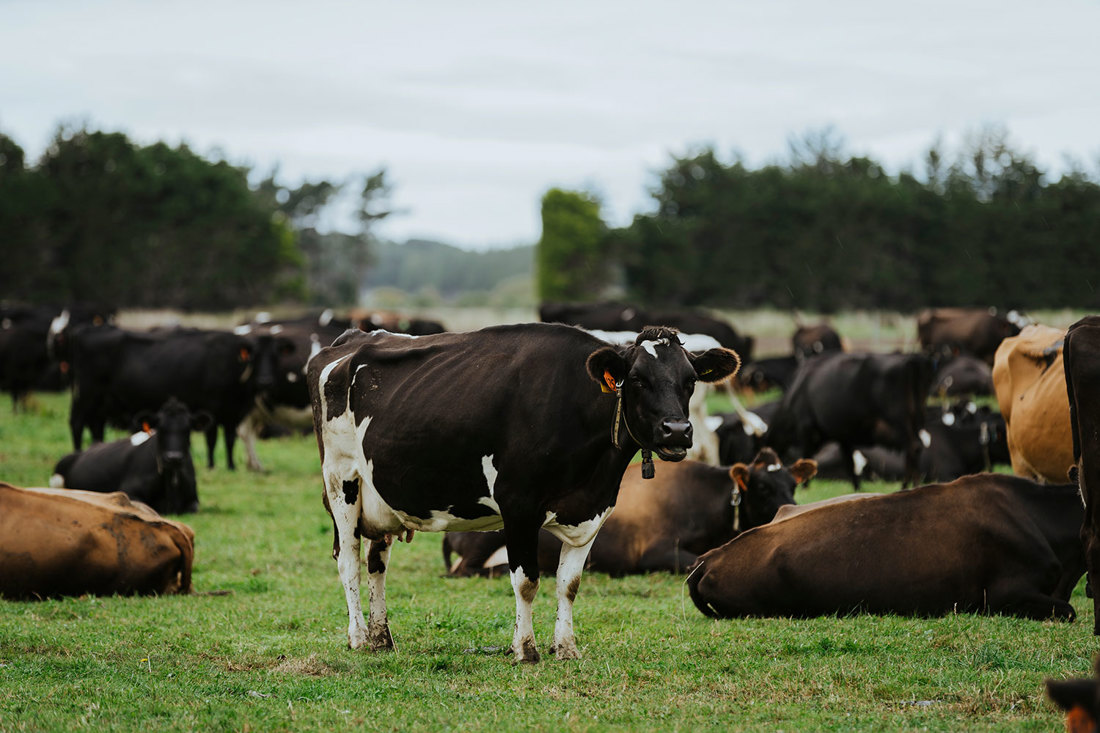
Cows are selective about the surface they’ll lie on. If the ground is wet, they’ll stay standing but become tired and experience a drop in well-being as a result. Cows will compensate for shorter lying times during bad weather by increasing their lying time when the weather and ground conditions improve.
Cows require a minimum of 8-10 hours of lying time per day and prefer 10-12 hours. It’s important to make sure conditions are good enough for them to lie down comfortably when they want to. This is a requirement of the Dairy Cattle code of welfare.
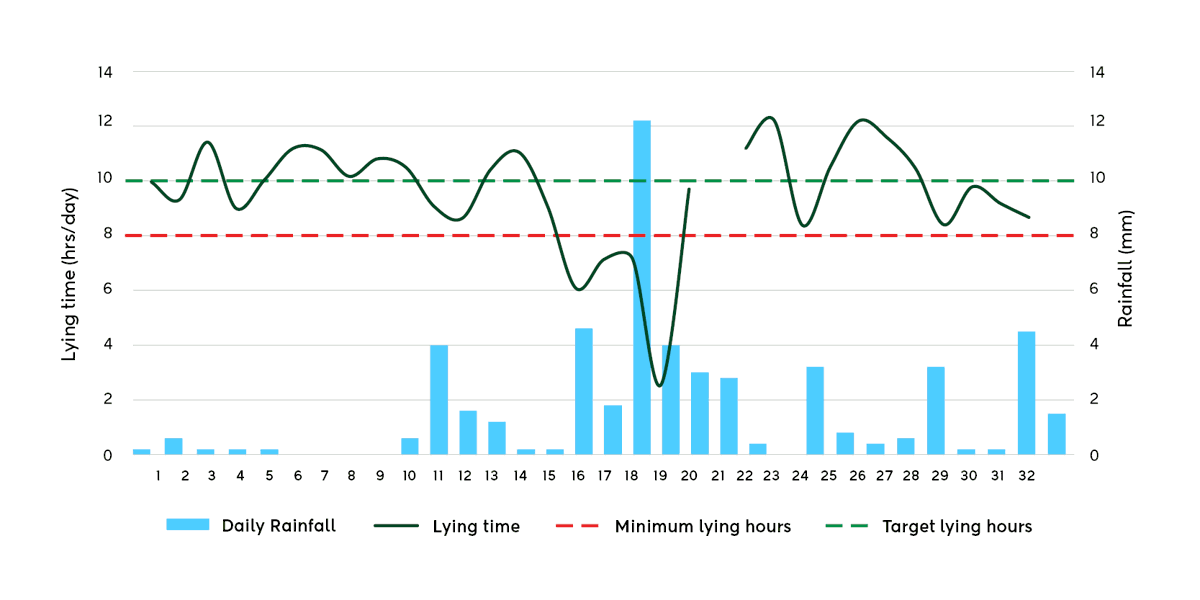
As shown in a trial completed at the Southern Dairy Hub in 2020, cow lying time is negatively impacted by rainfall events. Neave et al., 2022 – Behaviour of dairy cows managed outdoors in winter: Effects of weather and paddock conditions.
I know my cows are getting enough time resting if most of the cows are lying down when I check them in the afternoon, or if I can see lots of lying bowls where they have been lying.
Farmer tip
A study conducted by DairyNZ in partnership with AgResearch on behaviour of dairy cows managed outdoors in winter found the following results:
Note:
If swale and gullies are well managed and the soil type is suitable for wintering, cows will experience the majority of winter with a suitable lying area.
Persistent rain over several days requires similar management to an adverse weather event. Read more on wet weather management here.

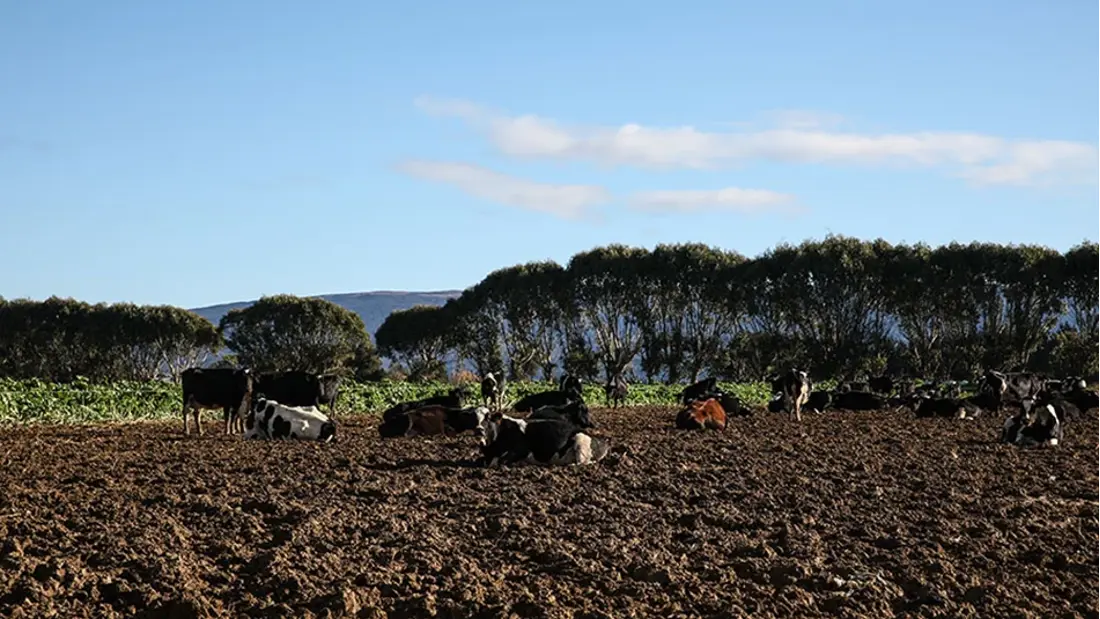
To assess paddock conditions in wet weather and determine actions to help maintain cow welfare, score your paddock using the scoring system below and take action if required.
Score one: Feed intake and lying time not restricted.
No action required.
Score two: Feed intake and lying time affected.
Actions to consider:
Score three: Feed intake and lying time restricted.
Actions to consider:
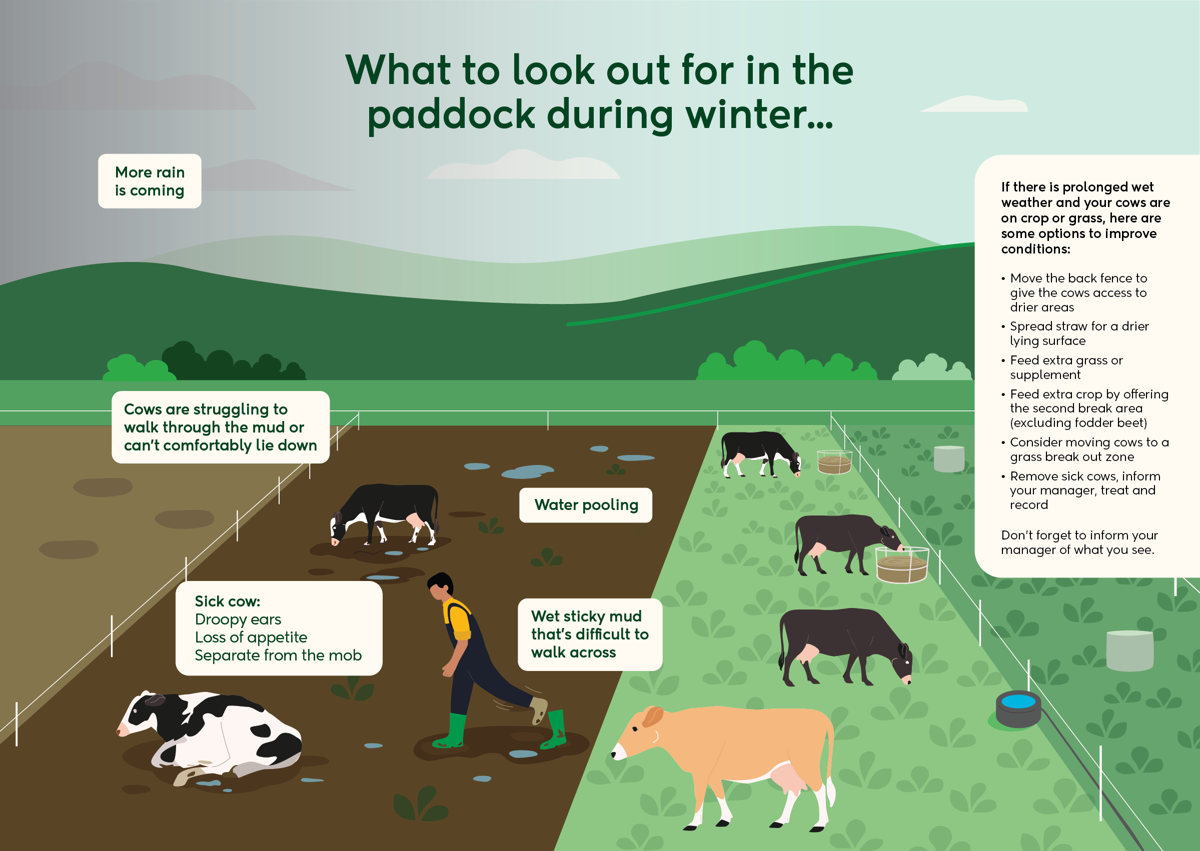
Minimising the challenges around cow comfort and environmental management begins well before winter, with selecting the right paddock for planting. Have a plan for how you manage the herd and paddock when it no longer provides a comfortable lying surface.
Here are some suggestions for how you can do this:
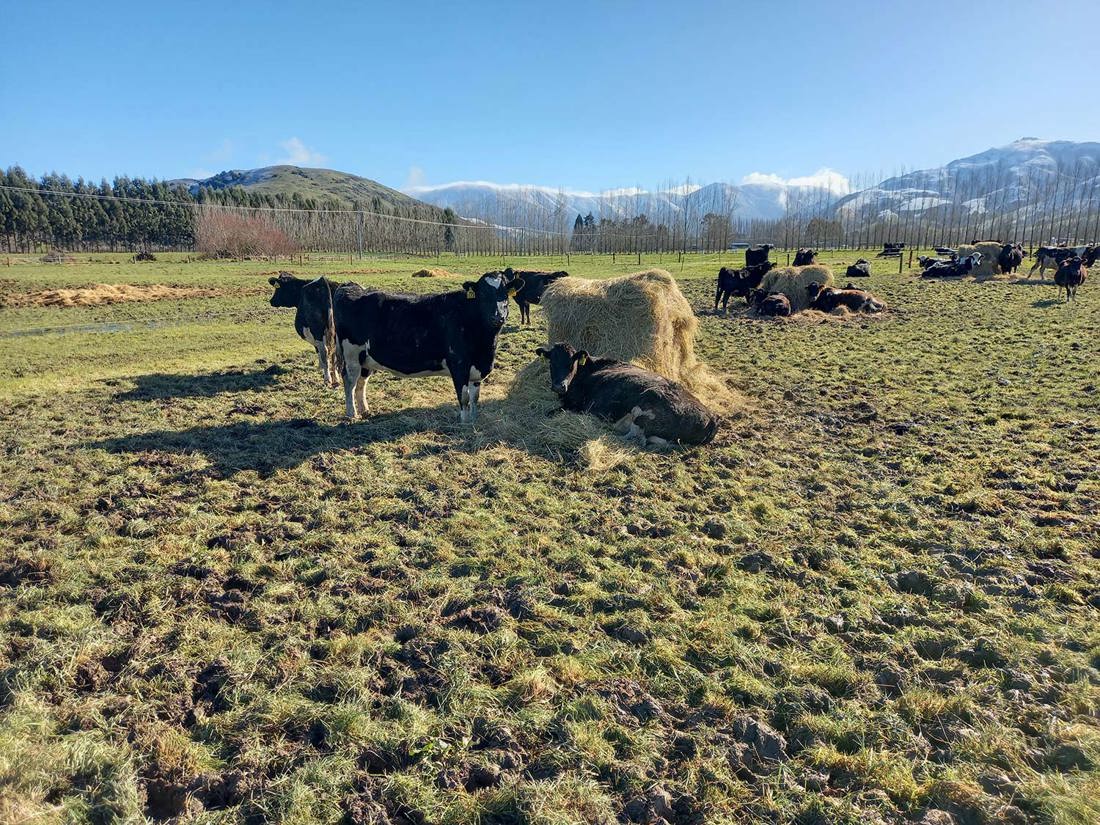
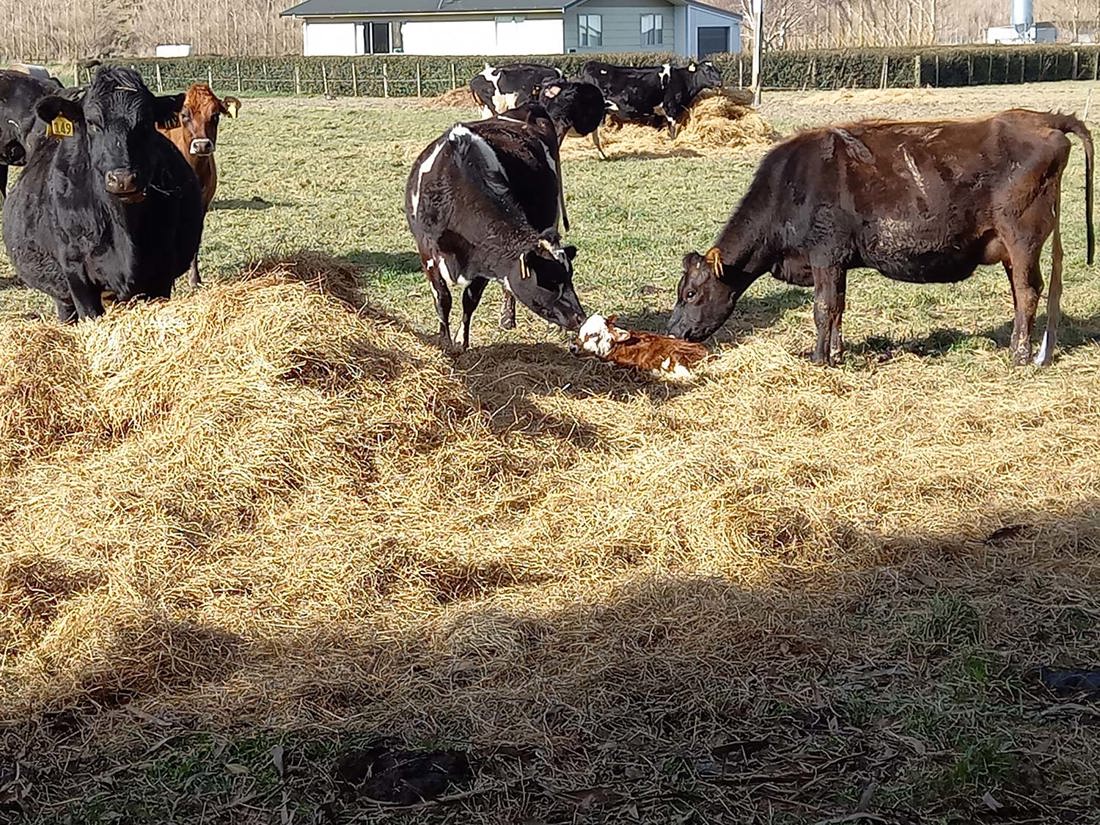

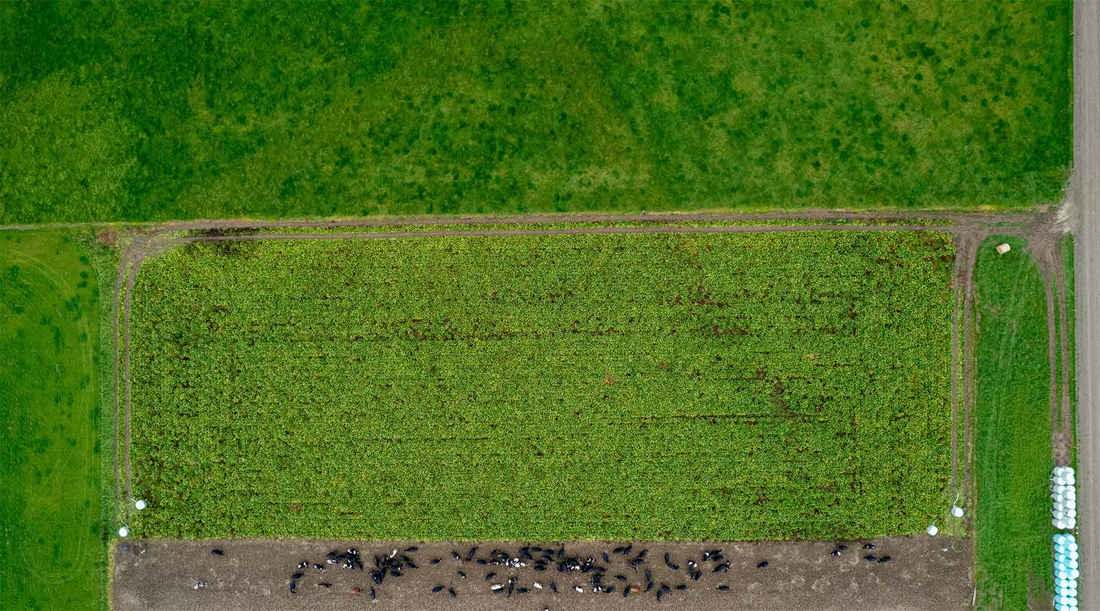
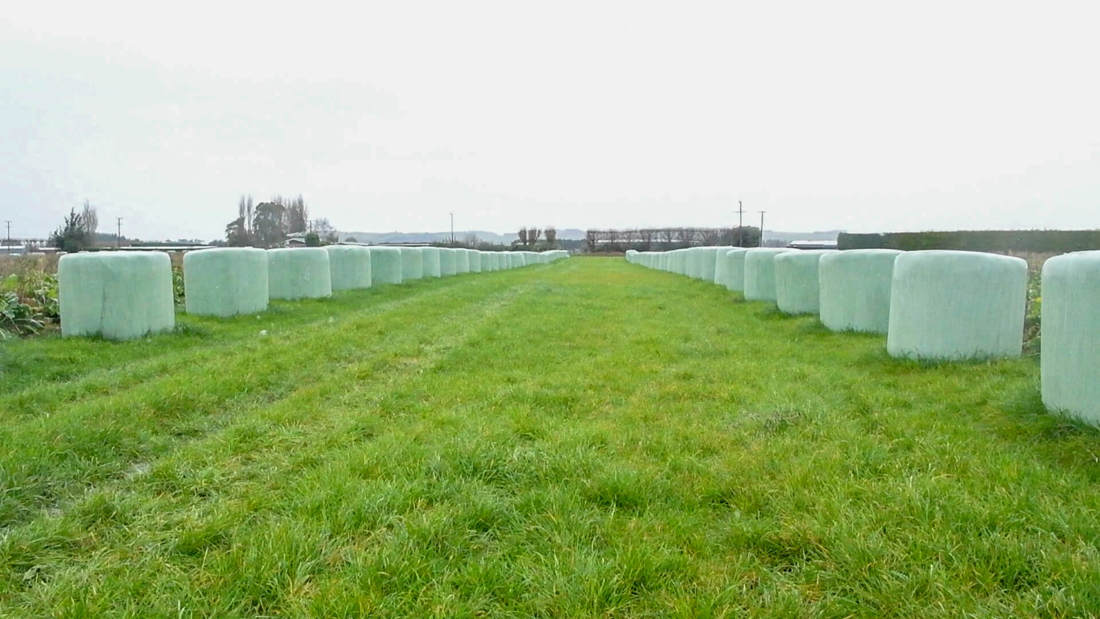
Southland dairy farmers Peter and Emma Hammond shares their tips on how they use grass break-out zones during wintering to provide their cows comfortable lying surfaces.

Include calving conditions in your wintering plan to ensure the whole farm team understands the level of care expected on your farm during winter.
Check calving conditions when winter grazing: Planning to calve in the right conditions is essential for cow and calf health. Avoid calving in muddy conditions to decrease the risk of death and infections for both the cow and the calf.
Mob cows by calving date: Grouping cows by calving date and removing them from crop paddocks well before calving will help protect cow and calf welfare. Remove animals from intensively grazed winter paddocks at least two weeks before their expected calving date.
If a calf is born on crop, promptly collect and remove the calf and cow to a drier area. Know what you will do with a slip or early calver (include actions to take for cow and calf).
Timed pregnancy diagnosis allows you to be well organised by identifying the animals closest to calving to move to the springer/calving area. Talk to your vet about dating pregnancies at scanning.
Be careful with low-protein feeds: Be careful in mobs fed fodder beet or high yielding swedes, as bagging, or springing up, is limited in cows on low-protein feeds. If feeding fodder beet, detail how you observe springing udders since cows might not bag up as much.
We pregnancy date scan our herd so that we know when each cow is expected to calve. Cows are drafted off the crop and into a pre-calving mob ten days before their expected calving date, or earlier if they udder up.
Farmer tip
Video: Calving in winter
Dairy farmer Luke Templeton shares his top tips for having a successful calving over winter.
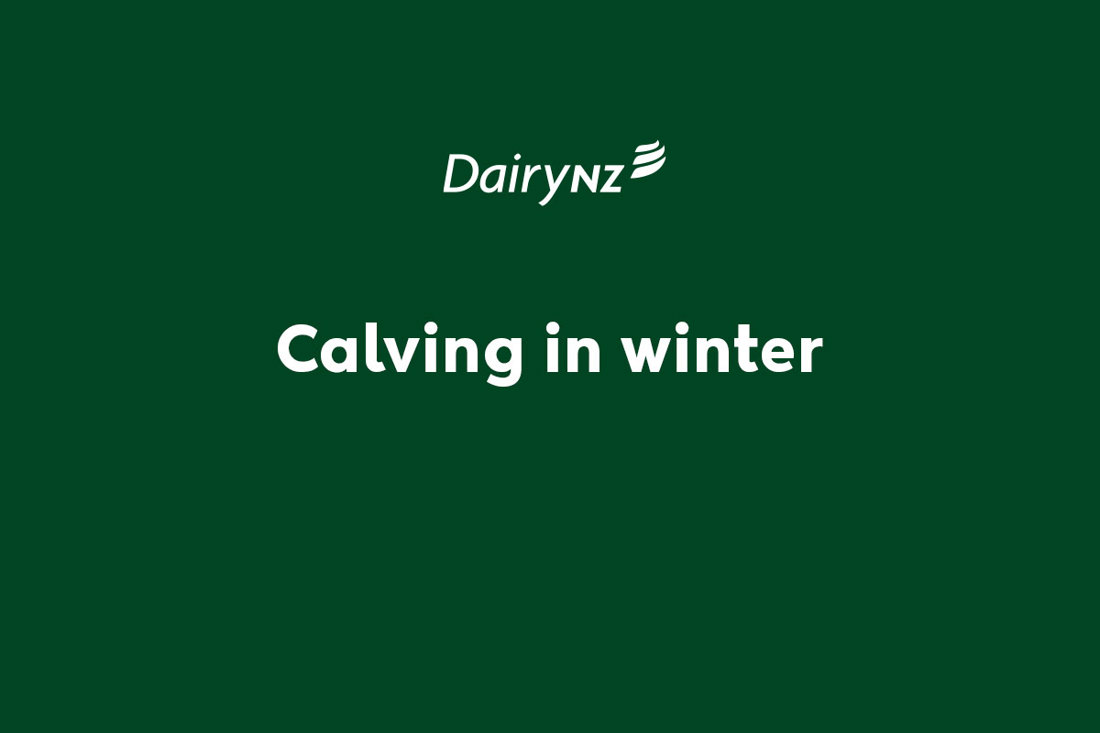
Cold stress in cows can occur in extreme cold and wet weather conditions. When designing your plan, consider the welfare of your cows and any potential environmental impact. Remember to factor in cold stress as it can have a greater impact on cows with low body condition score.
If a cow is clean and dry and there is little wind or rain, cold stress is rare until temperatures fall below -10°C.
The factors that increase the risk of cold stress are:
In poor weather, allow for decreased feed utilisation and increased energy demand. Depending on the BCS of the herd, and the weather situation, wet and windy conditions require an additional 0.5 – 3 kg DM/cow/day of intake.
Cows in good body condition are better able to withstand cold as the fat layer beneath the skin acts as an insulating layer. Body condition score the herd in autumn to make dry-off decisions, create winter mobs, and hit BCS targets at calving to improve cow performance the following season.
Our cows are wintered in BCS mobs, and then we redraft them into calving date mobs a couple of weeks before calving starts. For easy drafting, we tail paint our cows according to their calving date before they go to the winter crop.
Farmer tip
Feeding on and off crop: Cows must be transitioned on and off winter crops to allow the gut bacteria time to adjust to a new feed source. If wintering on crop, increase the proportion of supplement for up to a week to allow the gut bacteria to adjust back to a pasture-based diet.
The last 3–4 weeks of pregnancy: During the last 3–4 weeks of pregnancy, provide the correct balance of nutrients such as energy, protein, calcium, magnesium and phosphorus. This will improve ease of calving, calf survival, and the quality and quantity of their colostrum.
Tune in to Episode 80 of Talking Dairy, where DairyNZ Senior Scientist Dawn Dalley shares 15 years of research and practical tips to help you manage and ensure your cows thrive during the challenging winter months.
Now’s the perfect time to check in, plan, and set up for a strong season. We’ve pulled together smart tips and tools to help you stay ahead all winter long.
Whether you prefer to read, listen, or download handy guides, we’ve got you covered with trusted tools to support your journey every step of the way.
Put our proven strategies and seasonal tools to work. Boost production, support animal health and watch your profits hum.
Tools that are backed by science, shaped by farmers and made for this season.
That’s Summer Smarts.